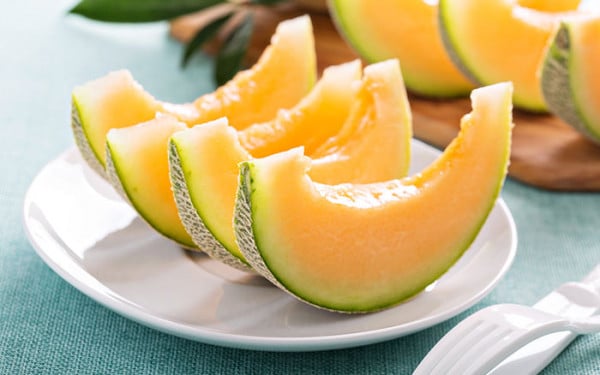Tucking into a refreshing melon on a warm summer’s day is enough to quench our thirst with their high-water content. The melons we buy in supermarkets are from warmer climates, so you may be surprised to know that you can grow your own melons in the garden here in the UK.
Fantastic fruits
Originating from Africa, melons are botanically a kind of berry. The majority of culinary melons that we eat are in the genus Cucumis.
Rich in vitamins A and C, as well as being a good source of folate and potassium, melons are a tasty and refreshing fruit. They also have high water content, at nearly 90%, so eating it will help keep you hydrated throughout the day.
It’s a flavoursome fruit and is a wonderful snack on a summer day, but it can be used in the kitchen to make smoothies, sorbets, or even added to salads.
With three types of sweet melon to choose from to grow in the UK, there are things to consider before choosing which to go for. The best to grow in the UK climate are cantaloupe melons, however honeydew can be grown as well. Musk melons are the third type, but they require a greenhouse to grow.
With the UK climate, it’s generally recommended to grow melons in a greenhouse or under a cloche near a sunny but sheltered wall. They can grow in containers or growbags, and can be left to grow along the ground, or supported with nets or frames.

Planting melons
Seeds should be sown in April, by sowing two seeds per pot around 1.5cm deep. Keep the pots on a sunny windowsill, or in a propagator with the temperature or around 18-21˚C.
When the seeds have germinated, discard the weakest seedling from each pot, keeping the strongest ones growing.
Before planting out, harden off the seedlings in May and June by taking them outdoors for the day and bringing them back indoors overnight.
In fact, you can even plant them in your compost heap because the high heat of the process will work wonders for the plant and will encourage the fruits to ripen.
I’ve planted pumpkins in my compost heap before, watch this video to see how it went.

Take care
To grow their best, melons need a warm and sunny spot with high humidity because they are tender plants. This makes them good to grow in greenhouses, cloches, or cold-frames.
Prepare the ground for growing by digging in plenty of organic matter a month before. As melons need warm conditions, covering the soil with clear polyethene for a week will help to increase the soil temperature before planting.
For the best structured plants wait until there are 5 leaves on the plant, then pinch out at this point to encourage growth of side shoots. Then, when sideshoots have grown keep the strongest 4 in place to continue growing.
When planting out, ensure there is around 90cm between each plant to give them sufficient room to grow.
Though they enjoy the heat, you still need to ensure the plants are protected from being scorched by the sun. During sunny periods shade crops growing in greenhouses with netting or use shade paint on the glass.
When the flowers appear, remove any netting or protective cover to encourage pollination.
Water the plants regularly to keep the compost moist, and feed the plants with high potassium liquid feed every week or two starting when the fruits are the about 2cm in diameter.

Harvesting
Rather than letting all of the fruits mature, choose the top 4 growing on each plant and pick off the rest, removing the rest of the leaves and flowers too. This will encourage the plant’s growth to focus on the development of the fruit.
Placing the melons on a piece of wood will prevent rotting and keep them in good condition whilst they ripen.
From the middle of summer, the melons will begin to ripen. You’ll know they are ready to harvest when they begin to crack at the stem, and you can smell the recognisable melon scent.

Types to try
‘Honey Bun’
If you have a smaller garden but still want to grow melons, this variety grows as a compact plant to 30cm tall, spreading to 1m. With each plant growing 4 melons, you’ll have deliciously sweet fruits in summer.
‘Ogen’
This melon is native to Israel and gets its name from the kibbutz (a collective settlement in Israel) where it was cultivated called Ha Ogen. The fruits grow to 15cm in diameter with pale green flesh with a sweet taste. It’s another versatile choice which can be eaten fresh or added to salads, smoothies, or sorbets.
‘Alvaro’
This variety is one that will ripen outdoors in the UK. The flesh is salmon in colour, with the classic melon sweet, juicy flavour. The fruits grow to 12cm in diameter and are ready to harvest from July until September.

Leave A Comment